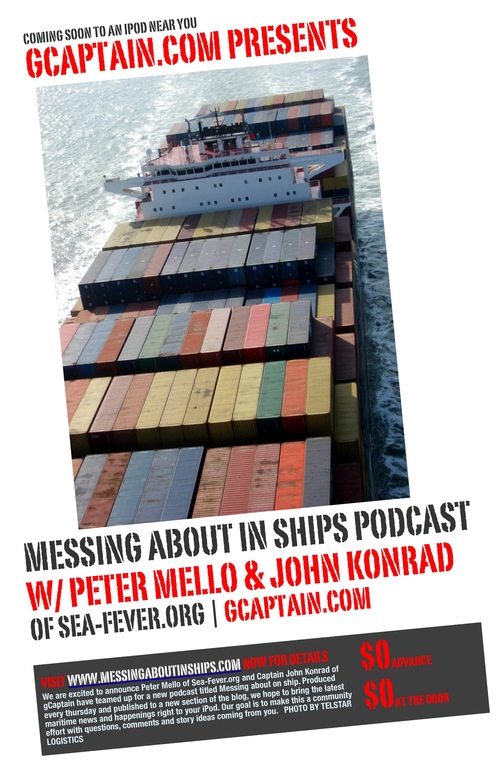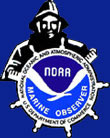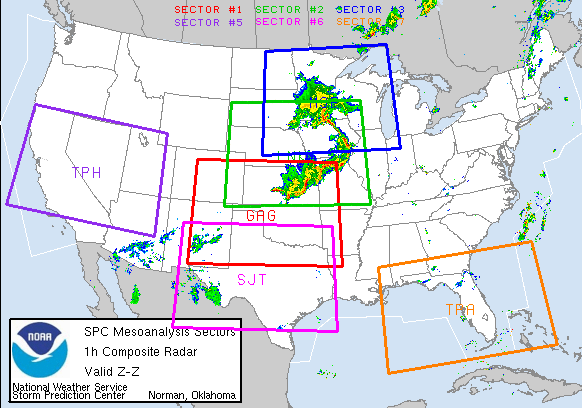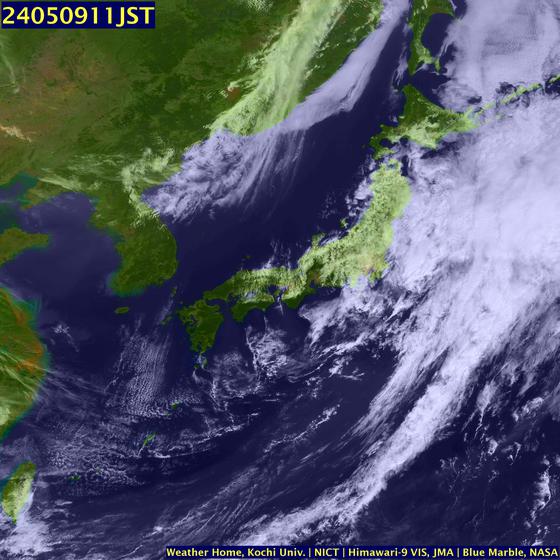 Marine Debris Will Likely Worsen In The 21st Century
Marine Debris Will Likely Worsen In The 21st CenturyScienceDaily (Sep. 21, 2008) — Current measures to prevent and reduce marine debris are inadequate, and the problem will likely worsen, says a new congressionally mandated report from the National Research Council.
The United States and the international maritime community should adopt a goal of "zero discharge" of waste into the marine environment, and a system to assess the effectiveness of existing and future marine debris prevention and reduction actions should be implemented. In addition, better leadership, coordination, and integration of mandates and resources are needed, as responsibilities for preventing and mitigating marine debris are scattered across federal organizations and management regimes.
"The committee found that despite all the regulations and limitations over the last 20 years, there are still large quantities of waste and litter in the oceans," said Keith Criddle, chair of the committee that wrote the report and the Ted Stevens Distinguished Professor of Marine Policy at the Juneau Center for Fisheries and Ocean Science, University of Alaska, Fairbanks. "We concluded that the United States must take the lead and coordinate with other coastal countries, as well as with local and state governments, to better manage marine debris and try to achieve zero discharge."
A National Research Council committee was convened at the request of Congress to assess the effectiveness of international and national measures to prevent and reduce marine debris and its impact. Marine debris, man-made materials that intentionally or accidentally enter and pollute the ocean, can cause significant harm. For instance, birds, fish, and marine mammals ingest debris, especially plastics, which can lead to digestive problems and uptake of toxic compounds.
Animals can also suffer injuries or die after becoming entangled in fishing-related debris such as plastic net fragments, rope, and packing straps. Marine debris also poses a health and safety hazard to beachgoers and divers, and could impact coastal recreation and tourism revenue. While marine debris comes from sources both on land and at sea, the committee focused on debris discharged at sea for the purposes of this report.
Although Congress previously called for federal interagency coordination to address the marine debris problem, leadership and governance remain inefficient and current mitigation efforts are episodic and crisis driven, the committee found. A national framework to identify priorities for dealing with marine debris and its removal efforts should be established. Additionally, Congress should designate a lead agency to expand programs to comprehensively address the problem, including land-based marine litter, derelict fishing gear, shipborne waste, and abandoned vessels.
Under the International Convention for the Prevention of Pollution from Ships (MARPOL) Annex V, which entered into force in 1988, many discharges from ships are permissible at sea. The committee said this approach does not encourage innovation or measures to minimize waste. It suggested that MARPOL Annex V be amended to include a prohibition on discharge of garbage at sea, allowing for limited exceptions based on specific vessel-operation scenarios. In order to discourage waste disposal at sea, ships also need to have access to adequate shoreside waste reception facilities for garbage and should be provided incentives, such as low disposal fees to use them, the report adds.
Nevertheless, some ships have already adopted zero or minimal discharge practices. The U.S. Coast Guard (USCG) and U.S. Environmental Protection Agency should disseminate best management practices for how vessels can attain zero discharge, source reduction, and waste minimization, the committee urged. EPA should also take the lead to work with academia, industry, and nongovernmental organizations to develop industry standards and guidelines for source reduction, reuse, and recycling for solid wastes that are generated during ship operations.
The committee was specifically asked to address the challenges surrounding derelict fishing gear. While regulated under MARPOL Annex V and domestic implementing laws, it is a persistent problem because of accidental losses and legal loopholes. Also, current regulations do not include accountability measures for commercial and recreational fishing vessels for loss of their fishing gear, offering few incentives to take responsibility for cleanup.
Effective marking of fishing gear is critical for identifying the sources or fisheries that may have deployed the gear, and NOAA should develop marking protocols, the report claims. Fishery management organizations should also adopt a "no fault" policy regarding the documentation and recovery of lost fishing gear. Under this policy, local fishermen, state officials, and the public should develop cost-effective derelict fishing gear removal and disposal programs, and fishermen participating in removal efforts could receive financial credit or be exempted from landfill fees.
Moreover, the high costs and difficulty in providing adequate reception facilities, particularly in remote areas, discourages proper disposal of used fishing gear and can also be a disincentive to retrieval. Therefore, EPA, NOAA, and the U.S. Army Corps of Engineers should help fishing communities explore alternative strategies and technologies for management, disposal, and recycling of used and recovered gear.
Within the issue of derelict fishing gear, the committee also addressed the growing concern about a specific type of gear known as fish aggregating devices, which are man-made floating objects designed to simulate natural debris and attract fish. These devices pose a threat as they are allowed to float freely and are often made of waste fishing net. The committee concluded that abandoned fish aggregating devices become derelict fishing gear when the captain of the vessel does not retrieve them. Under MARPOL Annex V, this should be considered an illegal disposal if the devices contain synthetic ropes, webbing, or other plastics. NOAA should modify the federal regulations to clarify the circumstances under which abandoned fish aggregating devices become illegal discharge. The committee also indicated that international and domestic fisheries organizations should do more to regulate these devices and prevent them from becoming debris.
The report was sponsored by the U.S. Coast Guard. The National Academy of Sciences, National Academy of Engineering, Institute of Medicine, and National Research Council make up the National Academies. They are private, nonprofit institutions that provide science, technology, and health policy advice under a congressional charter. The Research Council is the principal operating agency of the National Academy of Sciences and the National Academy of Engineering.
WEATHER NOTE
NASA data show Arctic saw fastest August sea ice retreat on record
Following a record-breaking season of arctic sea ice decline in 2007, NASA scientists have kept a close watch on the 2008 melt season. Although the melt season did not break the record for ice loss, NASA data are showing that for a four-week period in August 2008, sea ice melted faster during that period than ever before.
Each year at the end of summer, sea ice in the Arctic melts to reach its annual minimum. Ice that remains, or "perennial ice," has survived from year to year and contains old, thick ice. The area of arctic sea ice, including perennial and seasonal ice, has taken a hit in past years as melt has accelerated. Researchers believe that if the rate of decline continues, all arctic sea ice could be gone within the century.
"I was not expecting that ice cover at the end of summer this year would be as bad as 2007 because winter ice cover was almost normal," said Joey Comiso of NASA's Goddard Space Flight Center in Greenbelt, Md. "We saw a lot of cooling in the Arctic that we believe was associated with La Ni�a. Sea ice in Canada had recovered and even expanded in the Bering Sea and Baffin Bay. Overall, sea ice recovered to almost average levels. That was a good sign that this year might not be as bad as last year."
The 2008 sea ice minimum was second to 2007 for the record-lowest extent of sea ice, according to a joint announcement Sept. 16 by NASA and the University of Colorado's National Snow and Ice Data Center (NSIDC) in Boulder, Colo. As of Sept. 12, 2008, the ice extent was 1.74 million square miles. That's 0.86 million square miles below the average minimum extent recorded from 1979 to 2000, according to NSIDC.
Contributing to the near-record sea ice minimum in 2008 was a month-long period in the summer that saw the fastest-ever rate of seasonal retreat during that period. From August 1 to August 31, NASA data show that arctic sea ice extent declined at a rate of 32,700 square miles per day, compared to a rate of about 24,400 square miles per day in August 2007. Since measurements began, the arctic sea ice extent has declined at an average rate of 19,700 miles per day at the point when the extent reaches its annual minimum.
Observations of changes to sea ice over time are possible due to a 30-year record of data from NASA and other agency satellites, including Nimbus-7, Aqua, Terra and the Ice, Cloud, and land Elevation Satellite (ICESat).
Researchers say that the recent seasonal acceleration could be in part due to conditioning going on in the Arctic. For example, research by Jennifer Kay of the National Center for Atmospheric Research in Boulder, Colo., and colleagues reported this April in Geophysical Research Letters that reduced cloud cover in 2007 allowed more sunlight to reach Earth, contributing to a measureable amount of sea ice melt at the surface. Reduced cloud cover also contributed to warmer ocean surface temperatures that led to melting of the ice from below.
"Based on what we've learned over the last 30 years, we know that the perennial ice cover is now in trouble," Comiso said. "You need more than just one winter of cooling for the ice to recover to the average extent observed since the measurements began. But the trend is going the other way. A warming Arctic causes the surface water to get warmer, which delays the onset of freeze up in the winter and leads to a shorter period of ice growth. Without the chance to thicken, sea ice becomes thinner and more vulnerable to continued melt."
MARITIME NOTE
Cargo sweeping allowed to continue on lakes
By JOHN FLESHER
AP Environmental Write
But the Coast Guard said it was adopting its rule on an interim basis and was opening a new study phase that could lead to tougher requirements, including mandatory use of residue control methods.
For many years, ship crews have used high-powered hoses to wash their decks after loading or dropping off dry bulk cargo in port. They're believed to sweep about 1 million pounds of waste material into the lakes every year.
The regulation, published Monday in the Federal Register, lets cargo sweeping continue but encourages shippers to find ways to discharge less waste material.
It also sets new reporting and record-keeping requirements and adds more locations to a list of ecologically sensitive places where sweeping is off-limits, such as fish spawning areas, wetlands and wildlife refuges.
"Congress expected us to strike an appropriate balance between maritime commercial and environmental protection needs," the Coast Guard said.
The Lake Carriers' Association, which represents U.S.-flagged vessels on the Great Lakes, praised the decision Tuesday. The trade group says cargo sweeping does no environmental harm, and prohibiting it could impose huge costs while creating hazards for crew members.
But spokesman Glen Nekvasil said shippers already have reduced the volume of bits and pieces left on decks and in tunnels as cargo is moved on conveyor belts between a ship's hold and onshore storage facilities. It's unclear what more could be done, he said.
"It is in the companies' best interest, and the docks' best interest, to minimize residues. The customer is paying for that cargo to be delivered," Nekvasil said.
The Coast Guard listed a number of possibilities, such as enclosing or redesigning conveyors; spreading tarps to collect residues; using water mist to limit dust; and training crews on reducing cargo waste.
An environmental impact study found that ship residues can be seen on lake bottoms in small concentrations, but the effects are "barely detectable."
But the Coast Guard said in a news release it "remains concerned that the potential risk from the practice of washing dry cargo residue into the Great Lakes, no matter how benign it appears, may increase over time."
Rear Adm. Peter Neffenger, commander of the 9th District based in Cleveland, invited public comments as the study moves forward.
"The outcome of the final regulatory phase is not predetermined," he said.
Environmental groups contend dry cargo waste is just another form of garbage, which cannot legally be dumped into the lakes, and may do more harm to bottomlands than presently known.
Michael Murray, a staff scientist with the National Wildlife Federation, said he was encouraged that the study would continue and hoped for an eventual phaseout of cargo sweeping.
"We recognize that politically or even logistically it might be a little hard to adopt what we were hoping for at this point," Murray said.
With the prohibitions on cargo sweeping in sensitive areas, "we've at least gotten to the point where the agency is acknowledging this isn't an innocuous practice," said Joel Brammeier, vice president for policy with the Alliance for the Great Lakes. "That's progress."
HAVE A SAFE WEEKEND
RS



































































































![Validate my RSS feed [Valid RSS]](valid-rss.png)
No comments:
Post a Comment